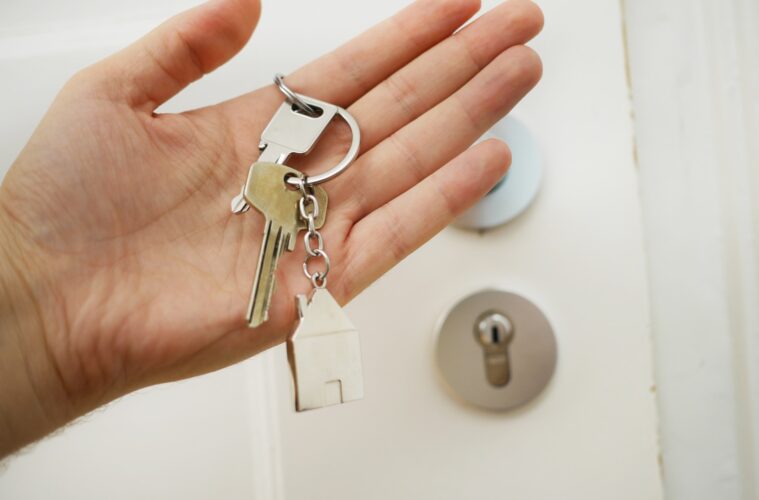Having a broken key stuck in your door lock can be a frustrating experience, especially if you’re in a rush or facing an emergency. Dealing with such a situation requires careful consideration and appropriate action to resolve the issue efficiently. In this article, we will provide you with expert tips from a locksmith in London on what to do when your door key breaks in the lock. By following these guidelines, you can minimise stress, ensure your safety, and effectively handle this inconvenient situation.
How Does a Key Break in the Lock?
Before we dive into the steps to resolve this issue, it’s essential to understand why keys break in locks. Several factors can contribute to key breakage, including:
- Weak or worn-out keys
- Rust or debris in the lock
- Misalignment of the lock mechanism
- Excessive force or improper key usage
Assess the Situation
When you find yourself with a broken key in your lock, it’s crucial to stay calm and assess the situation. Take a moment to evaluate the severity of the problem and determine whether it requires immediate action. Consider the following:
- Is the broken key sticking out of the lock, or is it entirely trapped inside?
- Are you in a hurry, or do you have time to address the issue?
- Is there a spare key available to use?
Gather Necessary Tools
To resolve this issue, you’ll need a few basic tools to help you remove the broken key from the lock. Here are the essential tools to have on hand:
- Tweezers or needle-nose pliers: These will assist in grasping and extracting the broken key.
- Lubricant: A lock lubricant, such as graphite powder or a silicone-based spray, can make the extraction process smoother.
- Spare key or lock pick set: In case the key extraction is unsuccessful, having a spare key or a lock pick set can be helpful.
Lubricate the Lock
Before attempting to remove the broken key, it’s advisable to lubricate the lock. Apply a small amount of graphite powder or a silicone-based lubricant into the keyhole. This lubrication will reduce friction and make it easier to extract the broken key.
Remove the Broken Key
Once you have lubricated the lock, carefully insert the tweezers or needle-nose pliers into the keyhole. Gently grasp the broken key and slowly pull it out. If the key is difficult to grip or stuck firmly, try wiggling it gently while pulling to dislodge it from the lock. Be patient and cautious during this process to avoid further damage.
Call a Professional Locksmith
If you’re unable to remove the broken key using the aforementioned methods or if the situation seems complicated, it’s best to seek assistance from a professional locksmith. A skilled locksmith London will have the expertise and tools necessary to extract the key without causing any damage to the lock. Contact a reputable locksmith in your area, explain the situation, and request their immediate assistance.
Preventing Key Breakage in the Future
To avoid encountering a broken key situation in the future, consider the following preventive measures:
- Use high-quality keys: Invest in durable, well-constructed keys that are less prone to breakage.
- Handle keys with care: Avoid applying excessive force when turning keys in locks. Be gentle and patient.
- Regular maintenance: Periodically lubricate your locks to keep them in good working condition.
- Remove rust and debris: Clean your locks to remove any rust or debris that may hinder their smooth operation.
- Professional assistance: If you notice any issues with your locks or keys, consult a professional locksmith for timely repairs.
Conclusion
Dealing with a broken key in your door lock can be a stressful experience, but by following the right steps, you can resolve the situation effectively. Assess the severity of the problem, gather the necessary tools, lubricate the lock, and attempt to remove the broken key yourself. If these methods fail, don’t hesitate to contact a professional locksmith for expert assistance. By taking preventive measures, such as using high-quality keys and practicing regular maintenance, you can minimise the chances of key breakage in the future.
FAQs
1. Can I use any lubricant to free the broken key from the lock?
While graphite powder or silicone-based lubricants are commonly used for this purpose, it’s advisable to consult a locksmith or refer to your lock’s manufacturer instructions to ensure you use the appropriate lubricant.
2. How long does it take for a locksmith to extract a broken key?
The time required for key extraction depends on various factors, such as the complexity of the lock and the key’s position. A skilled locksmith can usually extract a broken key within a few minutes, but it may take longer for more challenging cases.
3. Can I attempt to remove the broken key using household tools?
While it’s possible to extract a broken key using household tools like tweezers or needle-nose pliers, it requires careful handling. If you’re uncertain or if the key is deeply lodged in the lock, it’s best to leave the task to a professional locksmith.
4. Will a locksmith damage my lock during the key extraction process?
A professional locksmith uses specialised tools and techniques to extract a broken key without causing damage to the lock. However, if the lock is already compromised or in poor condition, the extraction process may result in some minimal damage. A reputable locksmith will ensure any damage is minimised.
5. Should I replace my lock after a key breakage incident?
In most cases, there is no need to replace the lock after a key breakage incident, especially if the lock remains in good working condition. However, if the lock is damaged or if you have concerns about its security, it’s advisable to consult a locksmith for an assessment and potential lock replacement.





